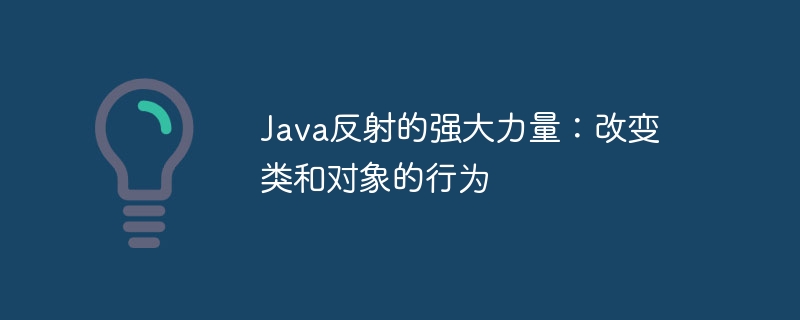Home >Java >javaTutorial >The Power of Java Reflection: Changing the Behavior of Classes and Objects
The Power of Java Reflection: Changing the Behavior of Classes and Objects
- WBOYWBOYWBOYWBOYWBOYWBOYWBOYWBOYWBOYWBOYWBOYWBOYWBforward
- 2024-02-19 16:40:36810browse

php editor Xinyi will take you to explore the powerful power of Java reflection, which gives developers the ability to change the behavior of classes and objects. Through the reflection mechanism, we can check the properties and methods of a class at runtime and call them dynamically to achieve flexible programming. This feature brings greater possibilities to Java programming, allowing us to respond more flexibly to different needs and scenarios.
To use Java reflection, you first need to obtain the Class object of the class. Class objects can be obtained in many ways, for example:
Class<?> clazz1 = String.class;
Class<?> clazz2 = Class.forName("java.lang.String");
Once you have obtained the Class object, you can use it to get information about the class, for example:
String className = clazz.getName(); int modifiers = clazz.getModifiers(); Class<?> superclass = clazz.getSuperclass();
You can also use Class objects to create and call objects, access and modify the state of objects, and intercept and modify the execution of methods. For example:
Object object = clazz.newInstance();
Field field = clazz.getDeclaredField("name");
field.setAccessible(true);
field.set(object, "John Doe");
Method method = clazz.getMethod("sayHello");
method.invoke(object);
Java reflection is very powerful, but it also has certain limitations. For example, reflection can cause performance degradation because it requires inspecting and modifying the information and behavior of classes and objects at runtime. In addition, reflection can be used to undermine Java's security, because reflection allows programs to bypass Java's access control mechanisms.
Therefore, when using Java reflection, you should carefully consider its advantages and disadvantages and use it with caution.
The above is the detailed content of The Power of Java Reflection: Changing the Behavior of Classes and Objects. For more information, please follow other related articles on the PHP Chinese website!

